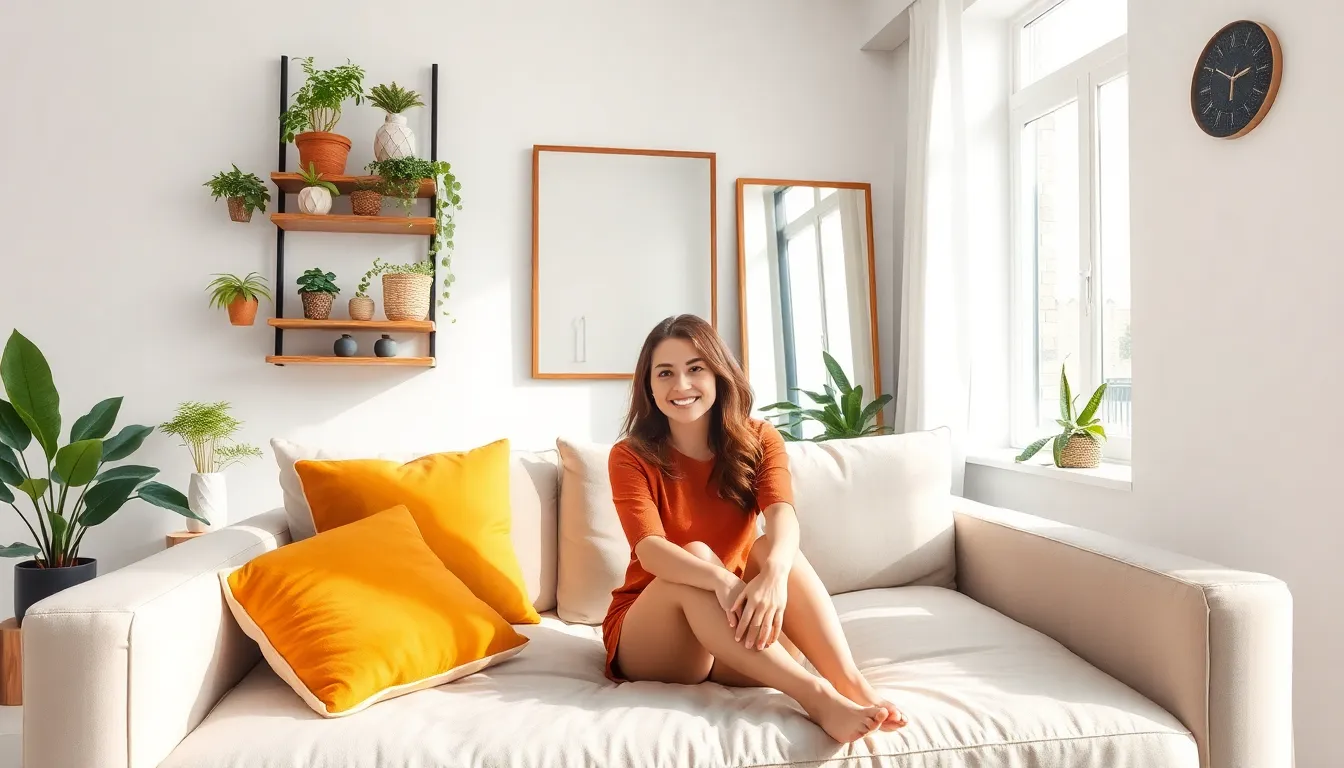When it comes to interior design, creativity reigns supreme, but what happens when that creativity leads to a little chaos? Picture this: a stunning living room redesign turns into a paint-splattered disaster. That’s where interior design insurance swoops in like a superhero—minus the cape. It’s the safety net every designer didn’t know they needed.
Table of Contents
ToggleOverview of Interior Design Insurance
Interior design insurance provides essential coverage for professionals in the field. Designers face various risks, including property damage, client disputes, and third-party injuries during projects. This insurance safeguards against financial losses that may arise from these unforeseen events.
General liability insurance offers protection against claims of bodily injury or property damage. Errors and omissions insurance protects against claims of negligence or inadequate work. Together, these coverages create a comprehensive safety net for designers when projects do not go as planned.
Specific areas of coverage include damage to client property, mistakes in design plans, and even breach of contract claims. In 2023, a study showed that 60% of small businesses, including interior design firms, reported facing litigation risks. Having adequate insurance mitigates potential financial distress related to such claims.
While many designers view insurance as an added expense, it becomes an investment in their business viability. It reassures clients about professional accountability, establishing trust and reliability. Moreover, certain contracts mandate proof of insurance before starting projects, further emphasizing its importance.
When selecting a policy, designers should assess the specific risks associated with their services and choose coverage accordingly. Consulting with an insurance broker can aid in tailoring a policy that meets unique business needs. Understanding policy limits, deductibles, and exclusions is crucial for effective risk management.
Interior design insurance not only protects against immediate financial repercussions, but it also allows designers to focus on their creativity. Prioritizing adequate coverage fosters a secure environment for creativity to flourish while minimizing potential setbacks.
Types of Interior Design Insurance
Interior design insurance comprises various policies that cater to different needs. Understanding each type helps designers choose the right coverage for their businesses.
General Liability Insurance
General liability insurance serves as a fundamental protection for interior designers. It covers claims of bodily injury or property damage that may occur on-site during projects. For instance, if a client trips over equipment and gets injured, this policy provides coverage for medical expenses. Additionally, it addresses damage to a client’s property caused during the design process. Many contracts require this insurance, ensuring designers demonstrate professionalism and accountability. By securing general liability insurance, professionals can focus on their creative visions without worrying about unforeseen incidents.
Professional Liability Insurance
Professional liability insurance, also known as errors and omissions coverage, protects designers against claims of negligence or inadequate work. This policy is crucial when clients believe that design plans fail to meet expectations. If clients dispute the quality of the services provided, financial protection is available through this insurance. For example, a designer may face claims related to incorrect measurements or miscommunication about project details. By investing in professional liability insurance, designers safeguard their reputation and financial stability, allowing them to navigate client expectations confidently.
Property Insurance
Property insurance covers physical assets essential to interior design businesses. This type of insurance protects against risks such as theft, fire, or natural disasters that could damage equipment, furniture, and artwork. For example, if a designer’s office is damaged in a storm, property insurance helps cover restoration costs. Many designers also keep valuable inventory for projects in their studios. When selecting property insurance, evaluating specific needs and the potential value of assets is important. This coverage not only safeguards material investments but also ensures smooth operations and project continuity despite unforeseen events.
Importance of Interior Design Insurance
Interior design insurance plays a crucial role in safeguarding interior designers against various risks inherent to their profession. This coverage not only protects their financial interests but also fosters professional credibility.
Protecting Against Legal Claims
Legal claims can arise from numerous situations during a project. General liability insurance addresses claims related to bodily injury or property damage that occurs on-site. Claims of negligence or inadequate work find protection under professional liability insurance. A 2023 study noted that 60% of small businesses struggle with litigation risks, highlighting the necessity of these policies for mitigating potential legal challenges. Adequate insurance coverage equips designers to navigate these risks confidently.
Coverage for Client Projects
Client projects come with unique risks that require tailored insurance solutions. Damage to client property during project execution is one significant area covered by insurance. Mistakes in design plans also receive protection, ensuring that financial repercussions are minimized. Breach of contract claims find resolution through appropriate coverage as well. By investing in comprehensive insurance, designers instill trust in their clients, ensuring their professional relationships remain strong and secured.
Choosing the Right Interior Design Insurance
Selecting the appropriate interior design insurance requires careful consideration of unique business needs and potential risks.
Assessing Your Needs
Designers must begin by identifying specific risks associated with their business. They should evaluate project types and client interactions to understand potential liabilities. Factors like the scope of work, location, and size of projects contribute to overall risk exposure. Understanding these elements helps designers choose policies that offer adequate protection. Reviewing past incidents or claims can further inform future insurance needs. Ultimately, the objective is to find coverage that effectively mitigates business risks while supporting creative endeavors.
Comparing Insurance Providers
Not all insurance providers offer the same quality of coverage or service. Designers must compare different options to find the best fit for their needs. It’s wise to review policy limits, deductibles, and exclusions across various companies. Additionally, investigating customer service reputation can highlight providers that support clients during claims. Gathering quotes and consulting with brokers can provide deeper insights into available coverage. By taking the time to research and compare, designers can secure an insurance plan that enhances their business operations and offers peace of mind.
Investing in interior design insurance is essential for professionals navigating the unpredictable nature of their work. It not only protects against potential financial setbacks but also enhances credibility and fosters client trust. By understanding the specific risks associated with their projects and selecting tailored coverage, designers can focus on their creative endeavors without the worry of unforeseen incidents.
With the right insurance policies in place, they can confidently take on new challenges and innovate in their designs. Ultimately, prioritizing insurance is a strategic move that safeguards both the designer’s business and the integrity of their creative vision.



